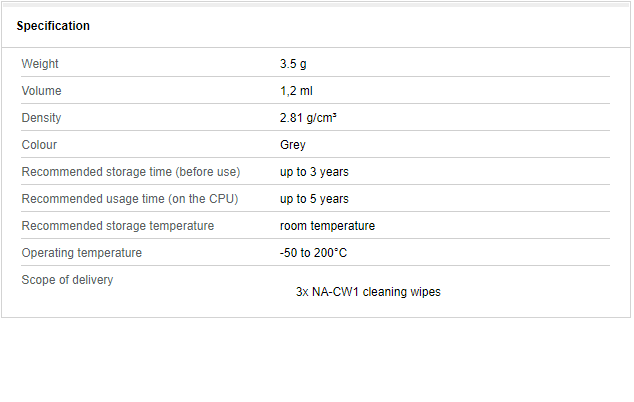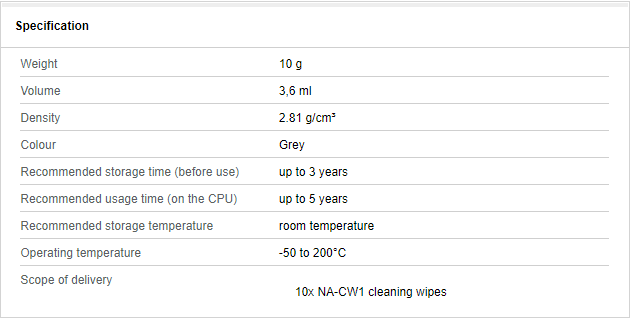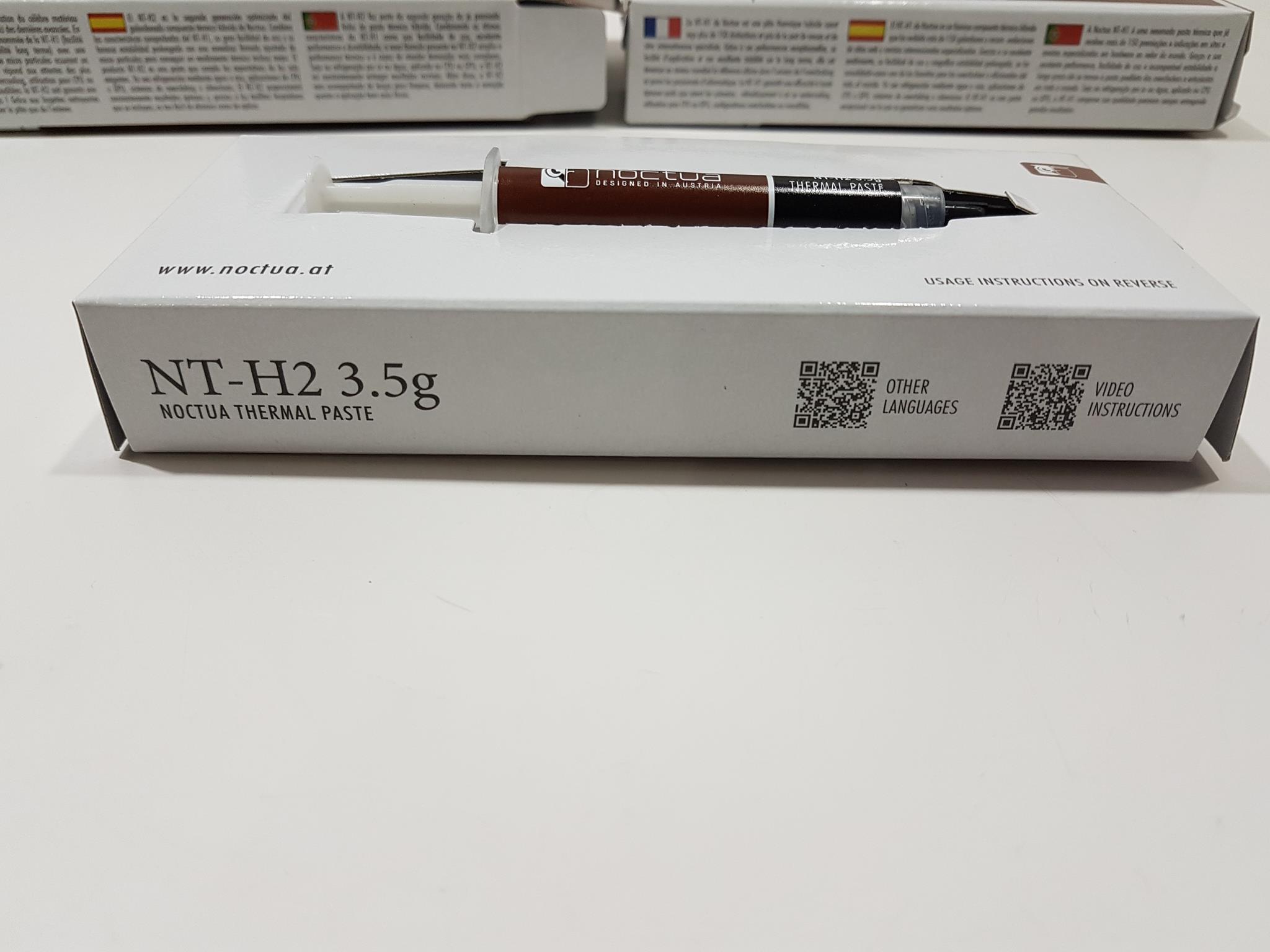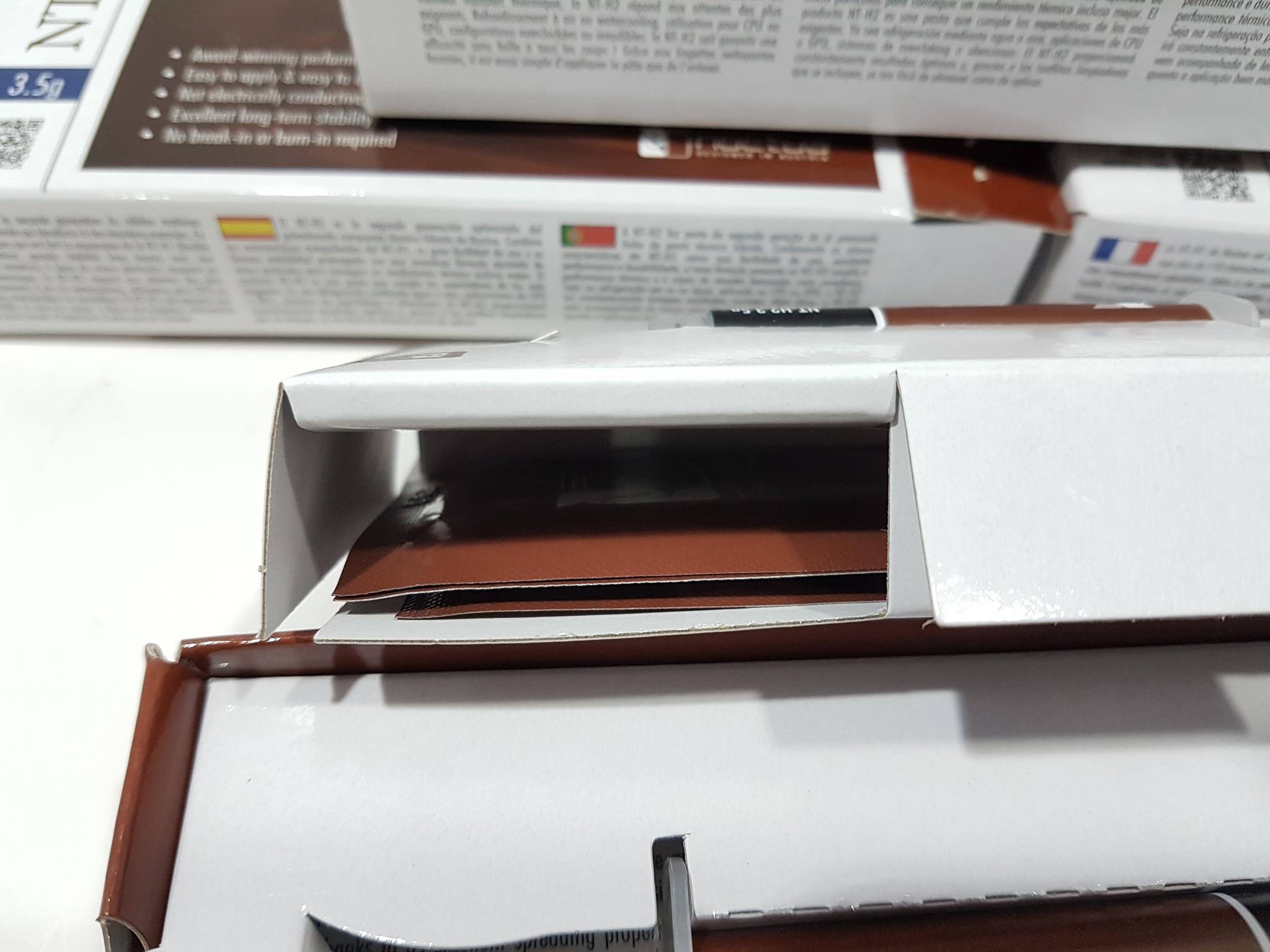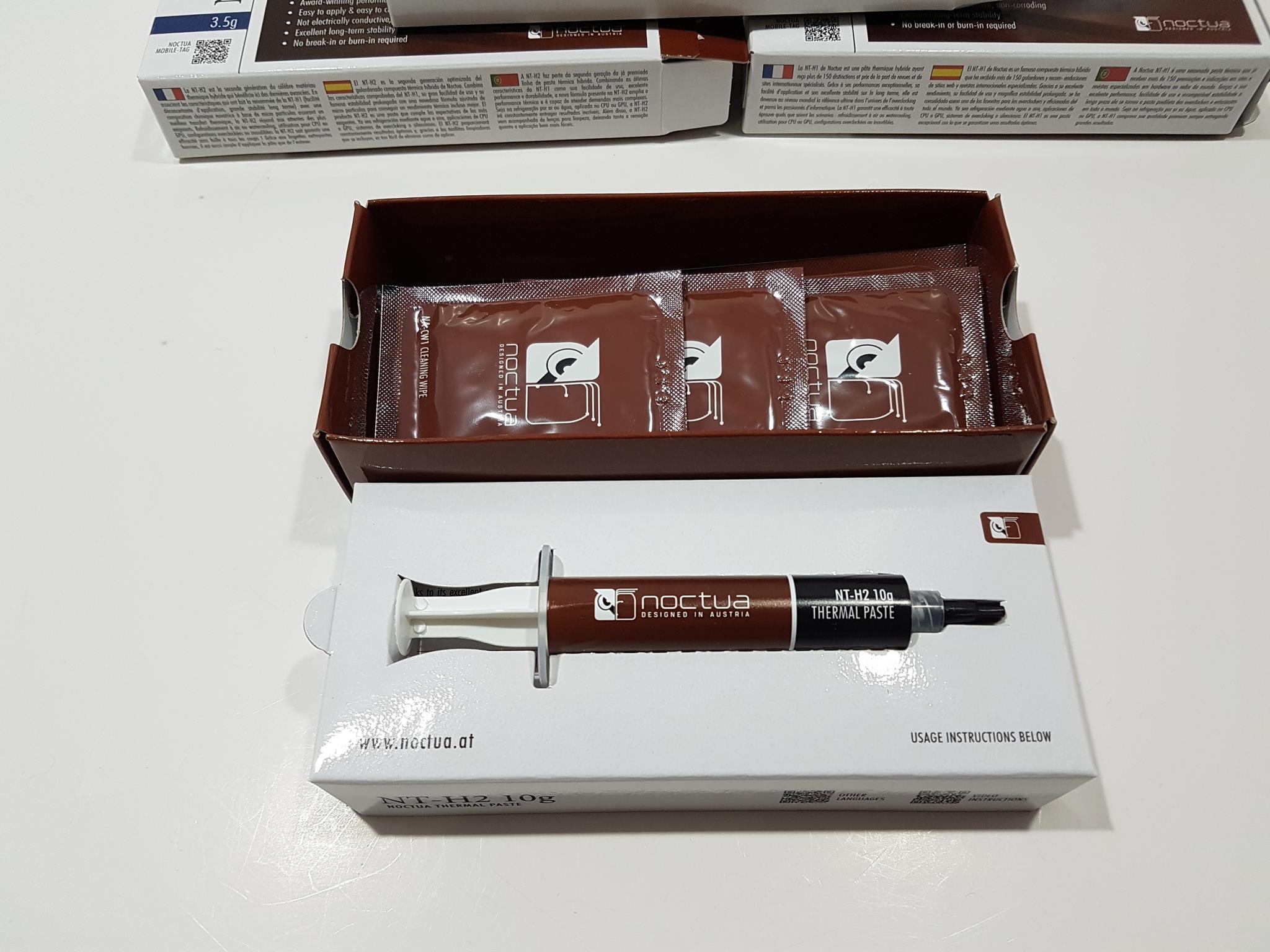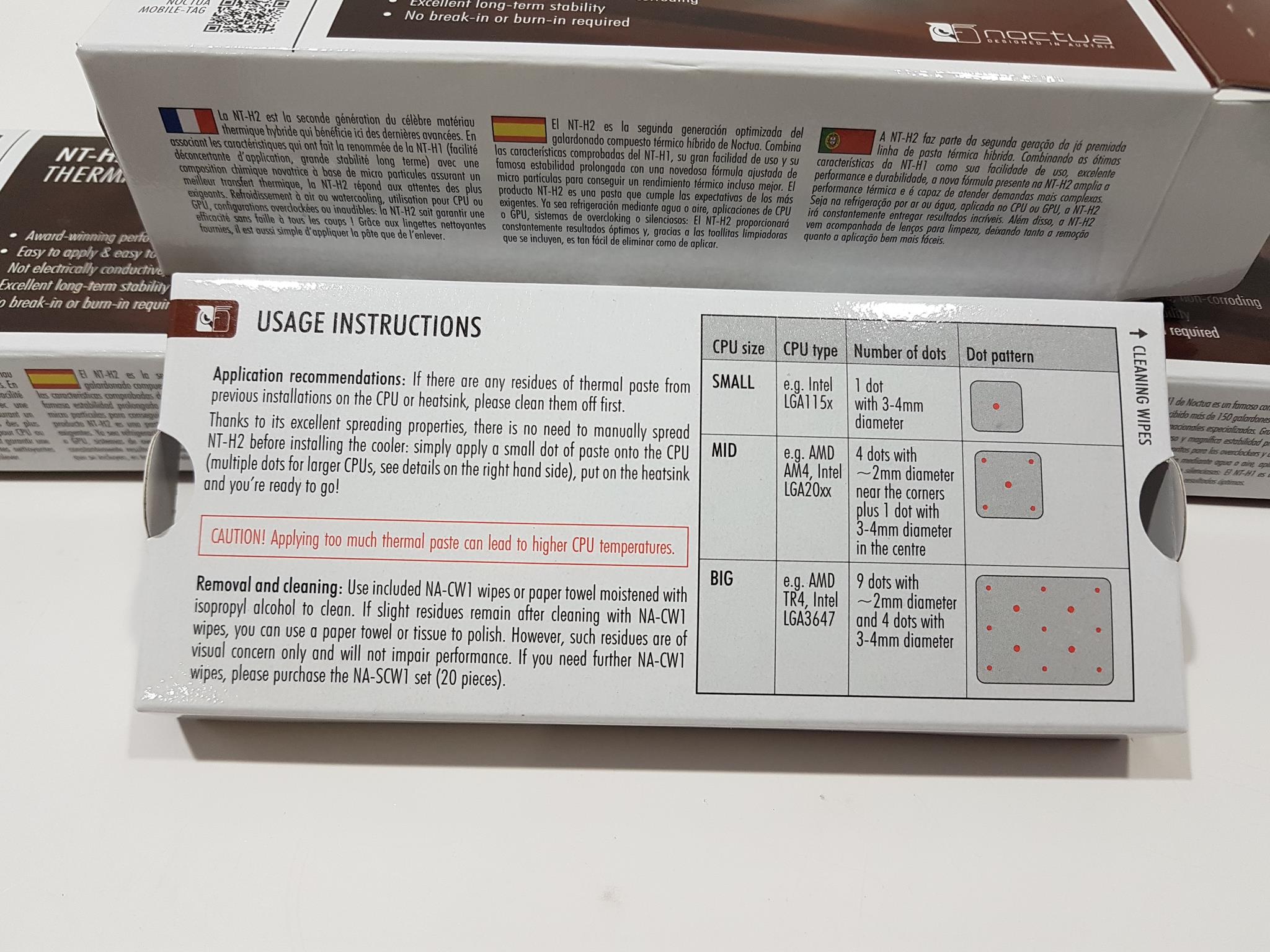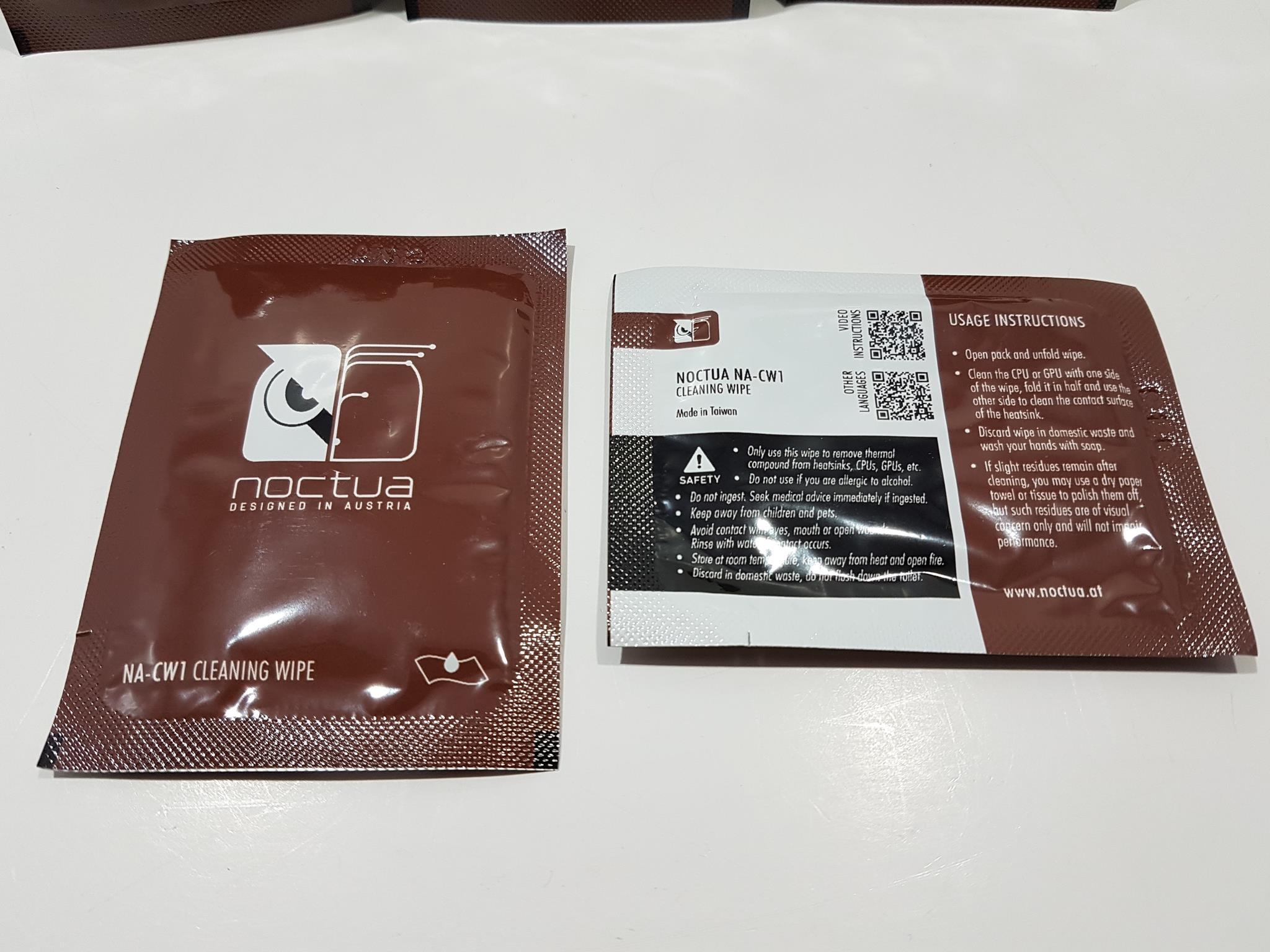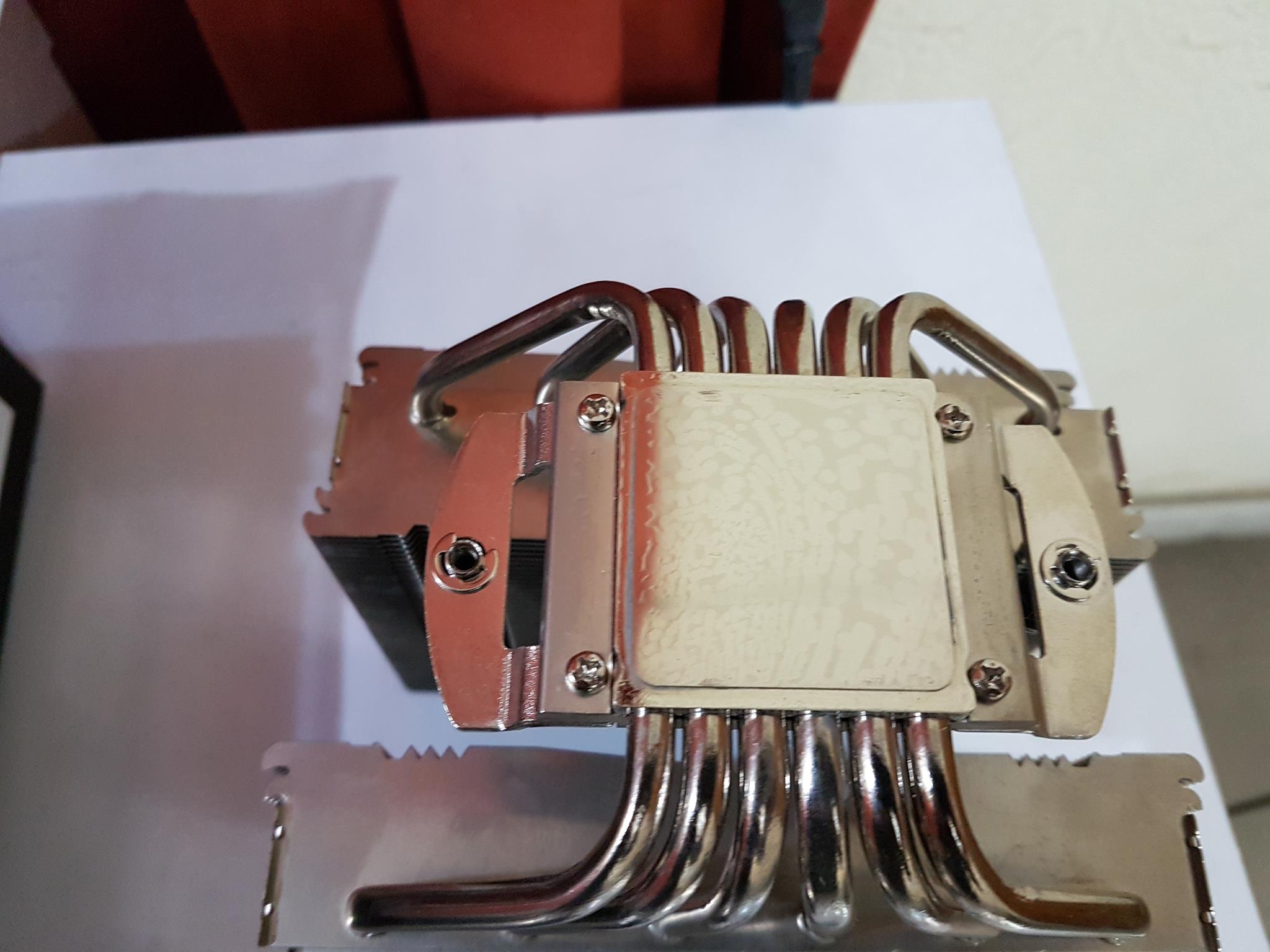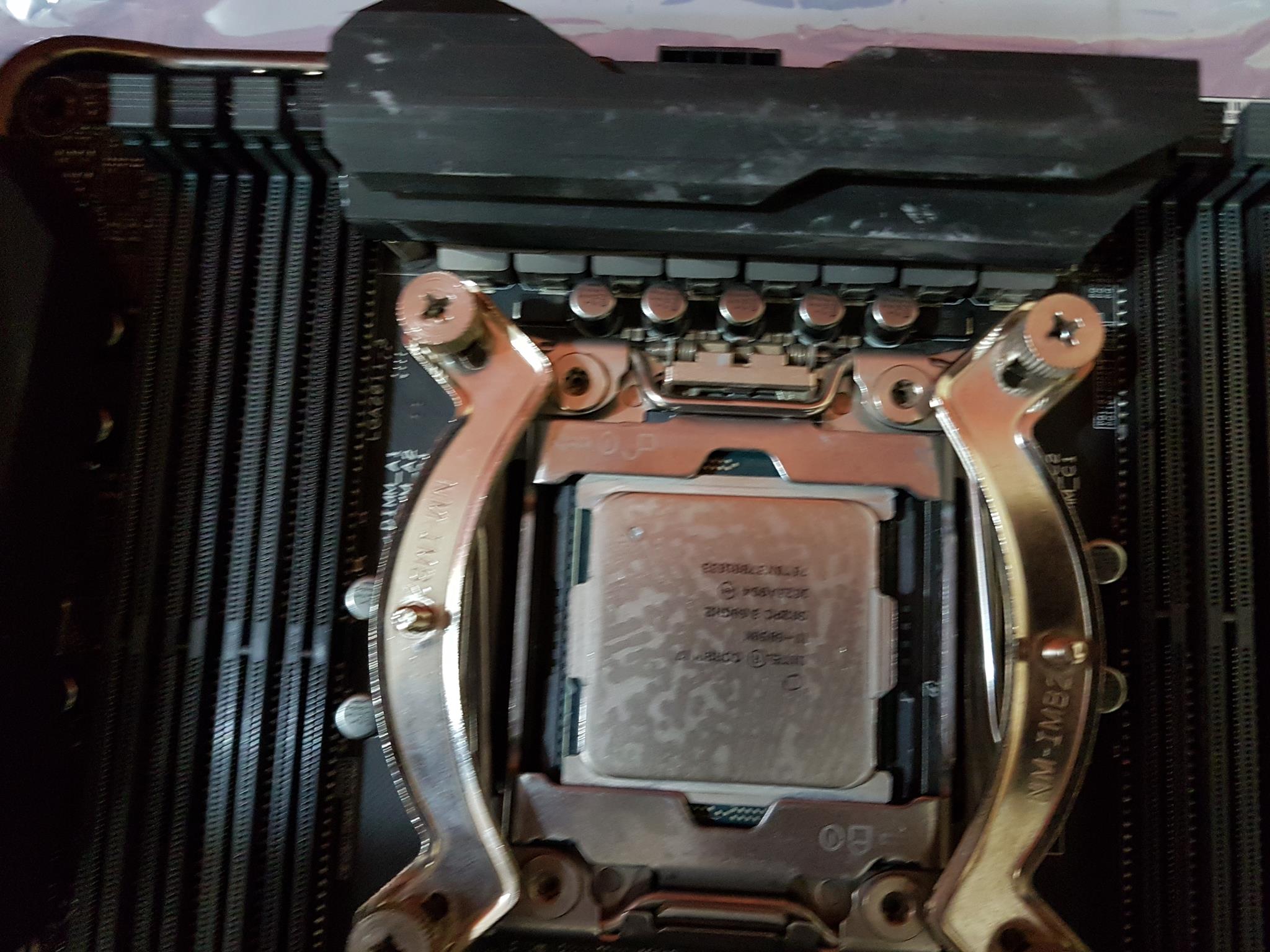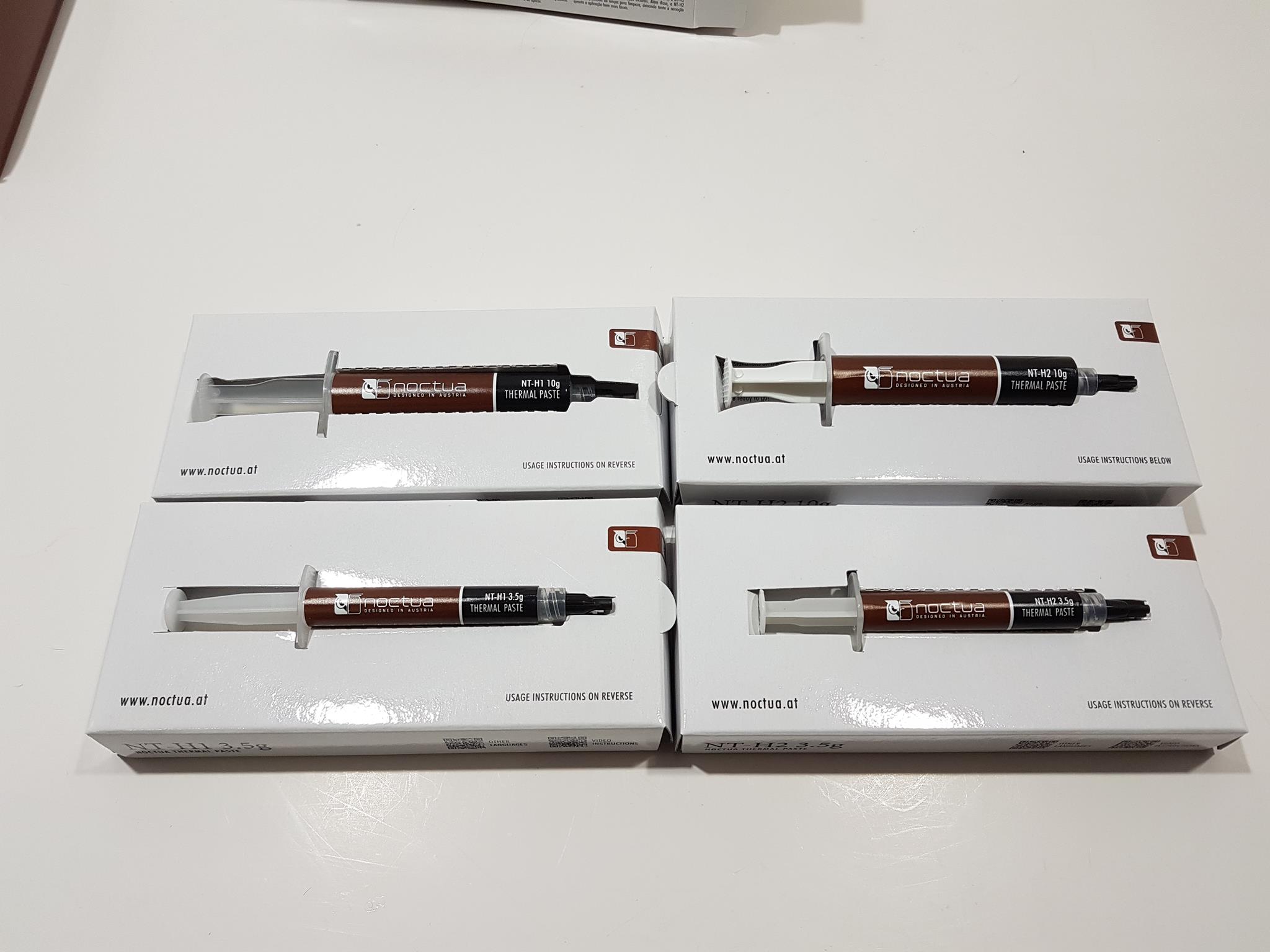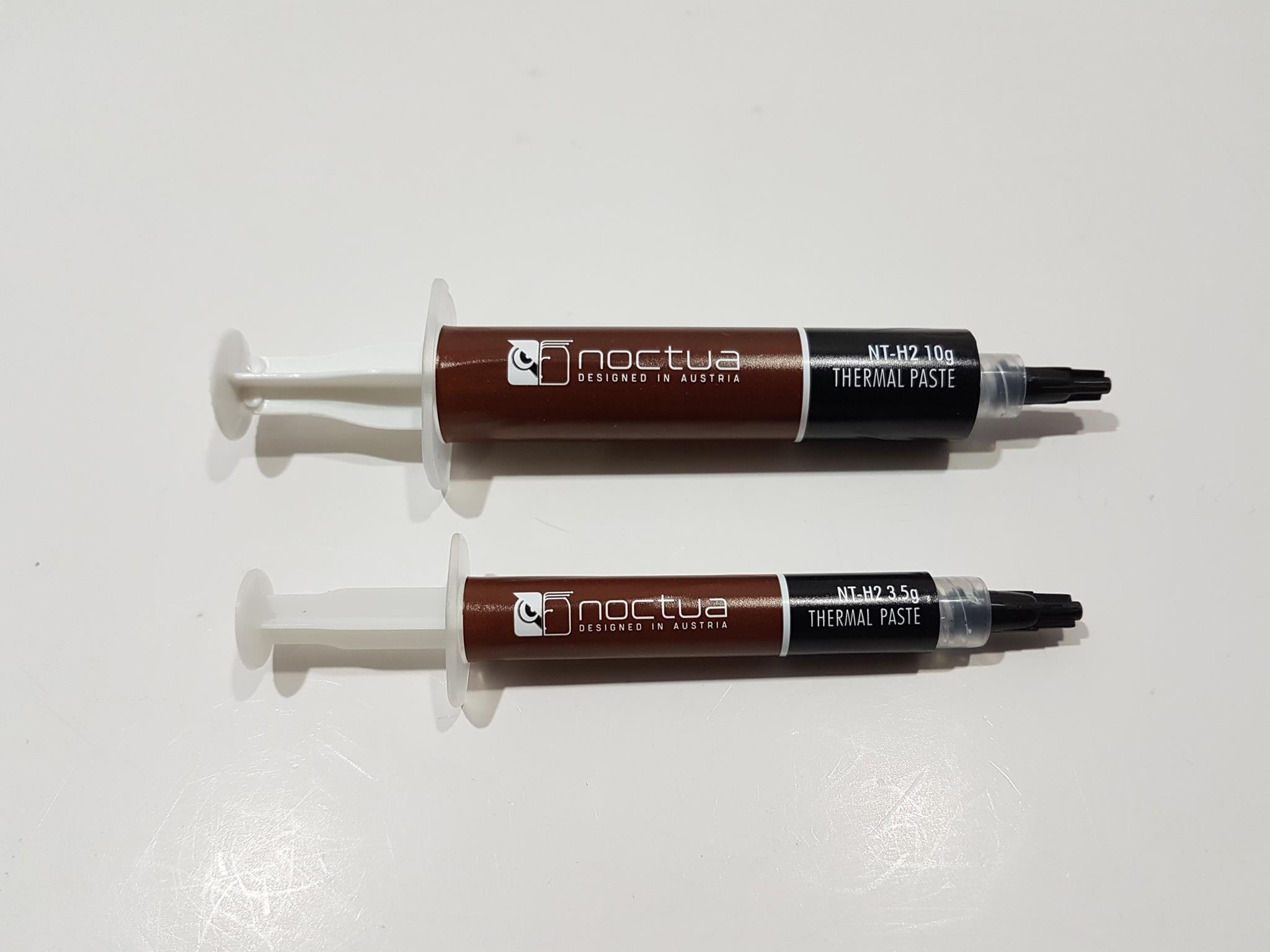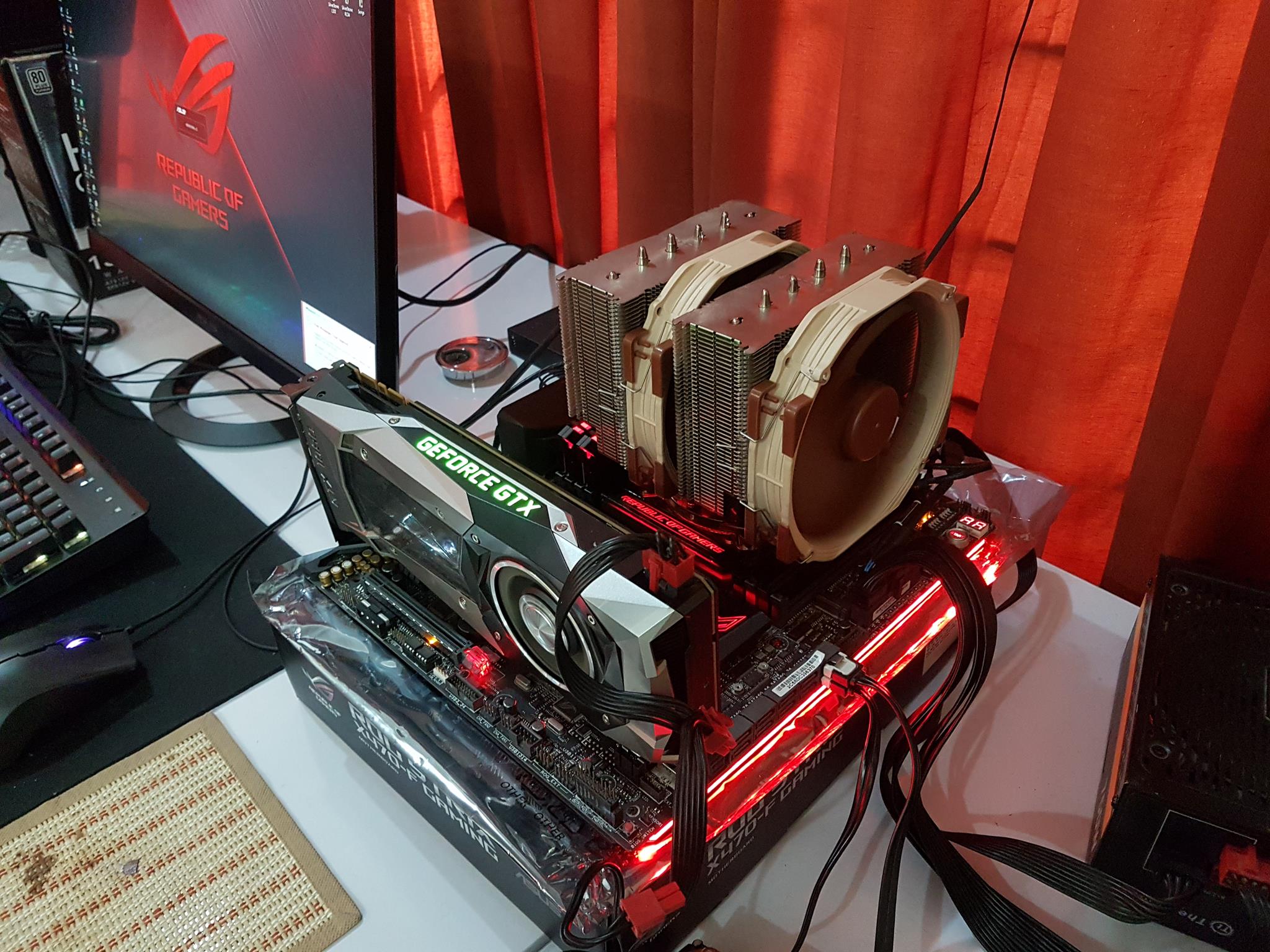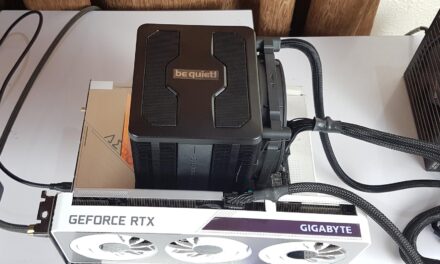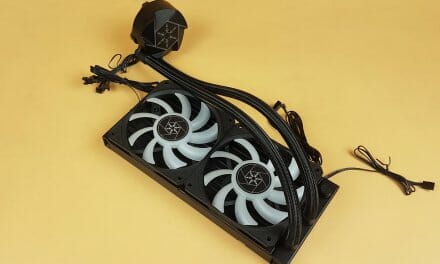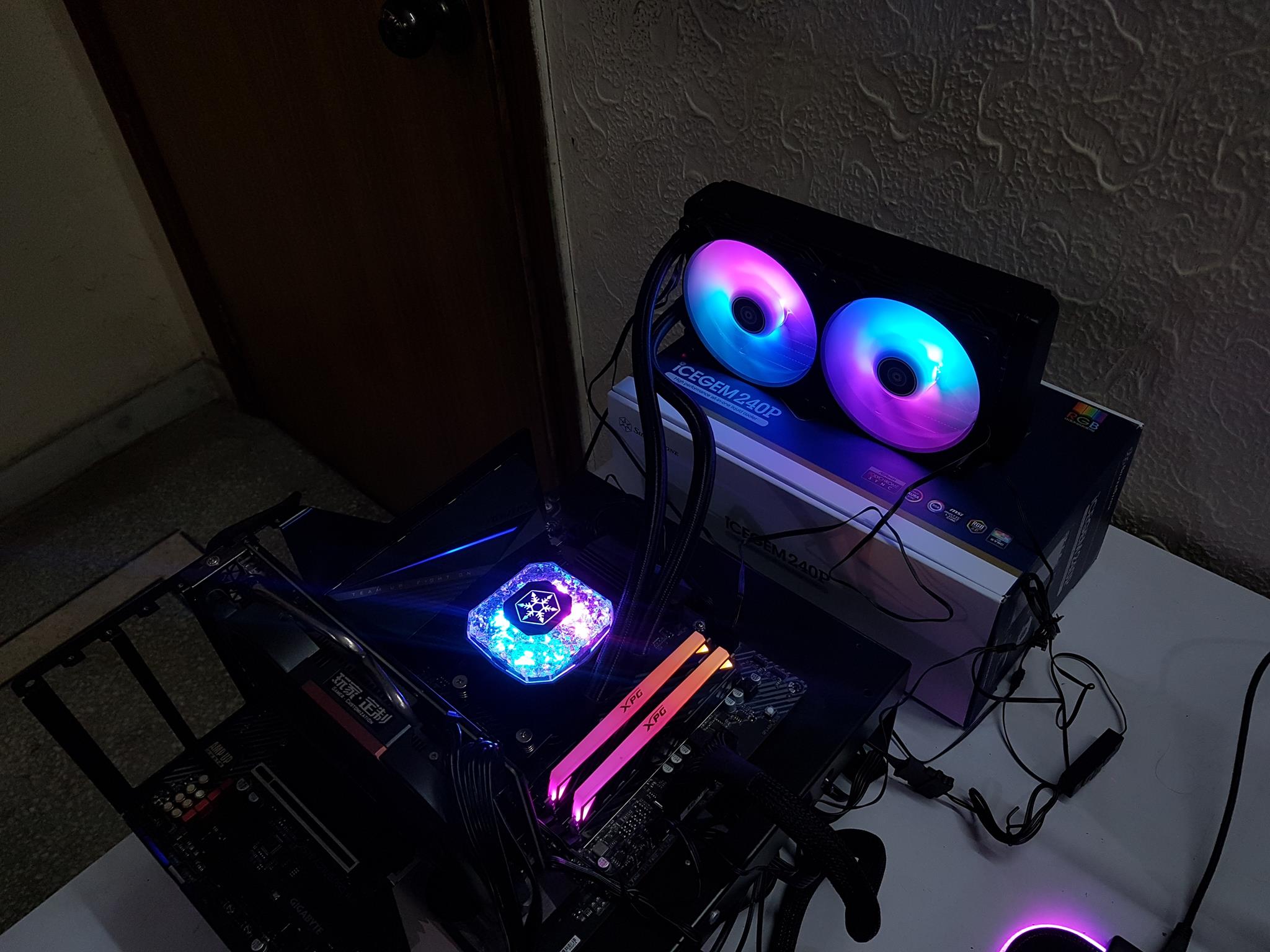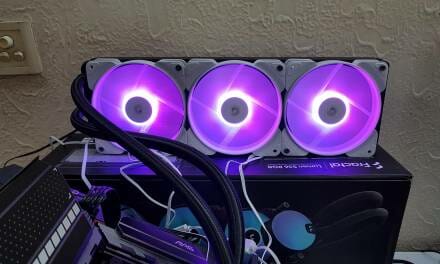
Noctua NT-H2 Thermal Paste and NA-SCW1 Cleaning Wipes Review

Introduction
Noctua originates from a collaboration between the Austrian Rascom Computer distribution Ges.m.b.H. and the Taiwanese cooling specialist Kolink International Corporation, pooling more than thirty years of experience in the development, manufacturing, and marketing of high-end cooling components. Established in 2005, Noctua took international silent enthusiasts’ hearts by storm and quickly developed into one of the most acclaimed suppliers of premium quality quiet cooling products. Today, Noctua is present in more than 30 countries across the globe and working with several hundred sales partners. Chosen by noise-conscious PC users, system integrators and industry clients alike, Noctua has become synonymous with impeccable quality, excellent customer service, and class-leading quiet cooling performance.
Noctua has recently released the second generation of their highly popular hybrid thermal compound NT-H1. The new paste has been named as NT-H2. The NH-T2 is using a fine-tuned mixture of metal oxide microparticles for even lower thermal resistance and reduced bond-line thickness at typical mounting pressures which as per Noctua’s saying would bring better thermal performance as compared to their award-winning NT-H1. This is very why I will be taking a look at their NT-H2 and will be spinning both TIMs to test if there is any thermal improvement. Noctua at the same time has released the 10gm packing of their NT-H1. And if you were thinking that would be all, there is another new product as well. It is NA-SCW1 comprising of 20 cleaning wipes that are ideal for removing thermal compound in a quick, clean and efficient manner. The NT-H2 is available in the 3.5gm packing and 10gm packing and both include 3 and 10 NA-SCW1 as well respectively. The availability of 10gm packing of NT-H1 is a wise move as it would be beneficial for the heavy users like reviewers, overclockers who are always in need of a high performing thermal compound. The packing of NT-H1 in 3.5gm has been changed as well to ensure the uniformity of the packing design of same category product.
| Item | Pricing |
| Noctua NT-H1 3.5gm | 7.90 EUR/USD |
| Noctua NT-H1 10 gm | 14.90 EUR /USD |
| Noctua NT-H2 3.5 gm | 12.90 EUR/USD |
| Noctua NT-H2 10 gm | 24.90 EUR/USD |
| Noctua NA-SCW1 | 7.90 EUR/USD |
Above prices are at the time of the review and products are already available on major retail stores around the globe.
Specification
Packaging and Unboxing
Since the packaging of the thermal compounds in both grams is the same, I will be showing the packaging of NT-H2 as the majority of the users would be buying 3.5gm. Pictures will be displayed where the noticeable differences would be if any. Let’s first start with the packaging of NA-SCW1.
The 20x cleaning wipes ship inside an all-black box. The top side of the box has a sticker pasted in the middle which is extending to the rear side. The Noctua brand name and logo are printed on its top. NA-SCW1 Cleaning Wipes are printed at the bottom of the sticker.
A single box has 20 NA-SCW1 cleaning wipes with each having a dimension of 15x12cm which is more than adequate to clean the cooler’s base and the CPU’s IHS. EAN and UPC info labels are printed at the bottom. The sticker is further extending to the bottom side of the packing box.
The usage instructions are printed on this side of the sticker. The product is made in Taiwan. Further safety instructions are printed at the bottom. The user can scan the codes to watch the video instructions on how to use the product on Noctua’s youtube channel.
The NT-H2 comes in two packing. One in 3.5gm and the other in 10 gm. Both boxes have identical layout except the dimension of the box. The top side of the NT-H2 3.5gm pack has Nt-H2 written in a vertical layout on the white color background followed by the 3.5gm packing information. Noctua mobile tag is printed at the bottom left which can be scanned for product page re-directing on the mobile devices. The salient features of the product are printed on the main section. Noctua brand name and logo are printed at the bottom right. The overall packing is following their standard packing for the coolers.
The backside of the main packing box has the specifications printed on the left side. The salient features highlight is printed in two languages in the center followed by the safety precautions at the bottom. The product is made in Taiwan.
This side has Noctua Thermal Paste NT-H2 3.5gm printed on the left side. The salient features highlight is printed in two more languages here followed by the EAN and UPC info labels.
This side has salient features highlight printed in 3 more languages.
Each packing has an inner container which can be slide in/out for access. As usual, Noctua is that good with the presentation of their products and these are no exception to the norms. The thermal pastes are tucked in the center of the paperboard box on a proper cutout to the size. The container is in full white color background which makes the overall packing stand out. Their website address is printed at the bottom left.
The inner container has NT-H2 3.5gm Noctua Thermal Paste printed at the left side. The 10gm packing will have the same layout except that 3.5gm will be replaced by 10gm. The mobile tags are printed on the right side. Scan them for the video instructions at their official youtube channel.
The 3.5gm packing of Noctua NT-H2 has 3 NA-SCW1 cleaning swipes bundled.
The 10gm pack of the Noctua NT-H2 has 10 NA-SCW1 cleaning wipes. Clearly, Noctua means business and is taking care of the user’s need in a complete solution from a single box.
This side shows the usage instructions. The Noctua has suggested using dot application methods with a varying number of dots subject to the Chip size. For example, they are suggesting to use a single dot of approximately 3-4mm diameter for the Intel LGA115X socket CPUs. For AMD AMx and Intel LGA-20XX socket CPUs, they are suggesting to use 5 dots with centered dot having 3-4mm diameter and cornered dots with each having 2mm diameter. For chips having more surface area, they are suggesting 9+4 dots.
Closer Look
Let’s start with the NA-SCW1 cleaning wipes. The NA-SCW1 is a 20-piece set of individually packed NA-CW1 cleaning wipes for removing thermal compounds such as Noctua NT-H2 and NT-H1. Pre-moistened with a custom detergent mixture, these wipes are ideal for cleaning CPUs, GPUs and the contact surface of heatsinks in a quick and efficient manner. Thanks to their large size (15x12cm), one pad is usually enough to clean both the chip and the cooler. They are isopropyl alcohol pre-moisturized wipes and from the looks of it seems like the concentration of the alcohol is approximately 70% or so as the residue from the wipes application is not evaporating fully as can be seen in the below picture. The user would need to use the paper towel or tissue paper to clean this residue.
Noctua has already addressed this observation and here is what they have mentioned about it on the packing usage instructions, “If slight residue remains after cleaning with NA-CW1 wipes, you can use a paper towel or tissue to polish. However, such residues are of visual concern only and will not impair performance”.
Above is a picture of the wipe. Sorry for potato quality. In order to use the NA-CW1, take it out from the sachet by tearing the sachet from the small cutout on one side. Fold the wipe and clean the paste off the base of the cooler. Now fold it the other way around and use the clean side to remove the thermal paste from the IHS of the chip. The size of the wipe is more than adequate to clean two cleaning surfaces at a time and I did not feel a need to use more than one wipes for single cleaning of two surfaces.
It is time to take a look at the main subject of this writing which is the second generation of the hybrid thermal compound aka NT-H2. Here is what the Noctua has to say about it, “Further improving the award-winning NT-H1, NT-H2 uses a new, fine-tuned mixture of metal oxide microparticles for even lower thermal resistance and reduced bond-line thickness at typical mounting pressures. This allows it to achieve an even better performance in most application scenarios. In Noctua’s standardized internal testing at various platforms and heat loads, up to 2°C lower temperatures were attained. Just like NT-H1, NT-H2 does not require a break-in period and due to its excellent long-term stability, it can be used on the CPU for up to 5 years. Both pastes are electrically non-conductive and non-corroding, so there is no risk of short circuits and they’re safe to use with all types of heatsink. NT-H2 will come in standard 3.5g and extra-large 10g packages that include three (3.5g) and ten (10g) NA-CW1 cleaning wipes for easy cleaning. Pre-moistened with a custom detergent mixture, these wipes are ideal for cleaning CPUs, GPUs and the contact surface of heatsinks in a quick and efficient manner. For enthusiast users who take off and install their coolers frequently, the NA-CW1 wipes are also available separately in a set of 20 (NA-SCW1).”
The NT-H2 is based on award-winning NT-H1 hybrid thermal compound from the Noctua. Same thermal paste is being used on my test bench for thermal performance evaluation of the coolers. Using a single thermal compound for all the testing ensures the standardization and mitigates any performance improvement/degradation from the bundled thermal pastes. Further improving the award-winning NT-H1, NT-H2 uses a new, fine-tuned mixture of metal oxide micro-particles for even lower thermal resistance and reduced bond-line thickness at typical mounting pressures. This allows it to achieve even better performance in most application scenarios.
The NT-H2 comes in gray color with 3.5gm pack having 1.2ml volume and 10gm pack having 3.6ml volume. Operating temperature rating is -50°C to 200°C which is impressive as NT-H1 has the same lower end but 110°C rating for the higher end. The NT-H2 has a density of 2.81 g/cm³ as compared to the 2.49 g/cm³ of the NT-H1. There is no need to spread the NT-H2 unlike the NT-H1 for optimal performance hence it makes the application method simple and easier. The NT-H2 is electrically non-conductive and non-corroding which makes it suitable and safe for any type of metal like aluminum, copper, or nickel plated surface. The most stunning achievement here is the Noctua’s claim of a single application that could last for 5 years of operation thanks to its stable formula. It can be stored up to 3 years on room temperature. The NT-H2 does not have any burn-in or cure time as is the case with some off-the-shelf thermal pastes which would need certain hours of usage before giving optimal results. Noctua has suggested that 10gm pack of NT-H2 would give up to 9 applications for large surface area chips like TR4 socket or up to 90 applications for the chips from Intel LGA-115x socket. The 3.5 gm packing would yield up to 3 applications for large size CPUs like TR4 socket or up to 20 times applications for small size CPUs like from LGA-115X. From my personal experience of using the NT-H1 3.5gm pack, on average a single tube has lasted me 16 applications on the Intel LGA-2011(3) and LGA-1151 sockets combined.
Thermal conductivity (Kelvin Value) of these thermal pastes is mentioned in the specifications. We reached out to Noctua and this is what we have found on their website. “While there are some standardized methods for testing the thermal conductivity or thermal resistance of thermal compounds, they do not always guarantee comparable results. What’s more, many vendors have started to claim thermal resistance or thermal conductivity specifications that appear simply unrealistic in the light of standardized testing. Last but not least, real-world performance of thermal compounds is affected by various other factors such as spreading properties, bond line thickness, mounting pressure or contact quality, so even if there was a common and reliable industry standard for testing the thermal conductivity or resistance of thermal pastes, it would not give customers a clear indication regarding the performance they can expect. For these reasons, Noctua has chosen not to publish specifications for thermal conductivity and resistance. Taking part in a game of claiming exaggerated specifications is not an option for us and we neither want to give specifications that, in the context of this practice, could appear misleading. Instead, we prefer to let independent reviewers judge the performance of our thermal compounds versus competing solutions in order to help customers in making an informed buying decision.”
Testing
Following configuration is used to test the thermal performance of the Noctua thermal pastes:
- Intel i7 6850k @ 4.3GHz using 1.350V
- Asus Rampage V Edition 10
- Corsair Vengeance RED LED 16GB @ 2666MHz
- Noctua NH-D15 (Dual Fan)
- Nvidia GeForce GTX 1080 FE
- Samsung 240 EVO 250GB SSD
Methodology
When it comes to testing the thermal paste, a single test is not enough to show the performance metrics. Hence, I have tested each thermal paste three times with a fresh application of the thermal paste each time. For cleaning the thermal paste after every testing, I have used Noctua NA-SCW1 wipes. The CPU is overclocked to 4.3GHz at 1.350V manual VCore. Asus RealBench is used to stress test the CPU for 60 minutes on each test run. The system was left at idle for 15 minutes at startup for which every possible background task/app was closed and the internet connection was disabled. The RealTemp is used to monitor the temperatures. Though I have taken idle temperature readings they are needless as only the heavy workload on the CPU will tell the true story. Ambient temperature was recorded using two room thermometers and a maximum of two readings is used to present the worst case scenario. As we are testing in an uncontrolled environment hence ambient plays a significant role in the evaluation of the results and it is imperative to show the delta temperatures. After completion of each test run, the average temperature is calculated by adding the maximum temperature on all cores and dividing it by the number of cores. The ambient temperature is then subtracted from the average temperature to yield the delta temperature. The average (delta temperatures) of three test runs were calculated for the better approximation for each thermal paste.
Results
The average idle temperature on the three runs for the Noctua NT-H1 was 20.33°C whereas it was 19.87°C for the Noctua NT-H2. Again emphasizing that only under load testing will show the true performance benefit, if any.
The above graph is showing the result of the three test runs on each thermal paste. Please, note that we can’t compare Test 1 result of NT-H1 with Test 1 result of NT-H2 for the reason that environment was not controlled and that three consecutive tests of NT-H1 were conducted first followed by three consecutive test runs of NT-H2. I am only showing these values to give you an idea of actual temperatures during these tests. We can’t simply sum the temperature of each test run and divide by three to get the average of three tests as the ambient temperature was different each time. Hence, only the delta temperatures would be useful for any comparison. The maximum temperature reading of all the 3 test runs on the NT-H1 was 63°C whereas the maximum temperature reading of all the 3 test runs on the NT-H2 was 59.67°C.
The above graph is showing the delta average temperature of three runs on each thermal paste. The average delta temperature for the NT-H1 comes to 43°C while it is 40.28°C for the NT-H2. The difference of 2.72°C is quite remarkable as it is coming from the thermal paste, not from the cooler. The same cooler with the same settings was used to ensure the standardization. Noctua has clearly delivered yet again!
Conclusion
Noctua has released the second generation of their highly popular and award-winning hybrid thermal compound NT-H1. The second generation has been designated as NT-H2 which is obvious given their naming convention. They have also released the 10gm packing of the NT-H1 which would definitely be helpful for the over-clockers, tech testers etc. This is not all as they have also released NA-SCW1 which is a pack of 20 cleaning wipes. Yeah, that is correct, cleaning wipes from Noctua. They have also changed the packing of NT-H1 3.5gm to ensure the packaging standardization.
The NT-H2 is a fine-tuned mixture of metal oxide micro-particles for even lower thermal resistance and reduced bond-line thickness at typical mounting pressures. This allows it to achieve even better performance in most application scenarios. The NT-H2 comes in two packing’s; 3.5gm and 10gm. The volume of 3.5gm packing is 1.2ml whereas it is 3.6ml for the 10gm packing. The paste density is 2.81 g/cm³ and it is in Gray color. The recommended storage time for the NT-H2 before usage is up to 3 years. What is more impressive is up to 5 years of recommended usage time on the CPU after application. If this is true then our burden of changing the thermal paste every now and then due to dryness has been taken care of. The operating temperature is ranged from -50°C to 200°C. The 3.5gm pack includes 3 NA-CW wipes and the 10gm pack includes 10 NA-CW wipes. The 3.5gm tube is expected to give approximately 20 applications on small size CPUs like for Intel LGA-1115x sockets or 3 applications for large size CPUs like for AMD TR4 socket. The 10gm pack is expected to give 90 applications for small size CPUs or 9 applications for large size CPUs. From my personal experience of using the NT-H1 3.5gm pack, on average a single tube has lasted me 16 applications on the Intel LGA-2011(3) and LGA-1151 sockets combined. This would depend upon the application method. The NT-H2 is electrically non-conductive and non-corroding as well so it can be used with a peace of mind with metals like Aluminum or Copper and even on nickel plating and without concern of short-circuiting.
The NA-SCW1 is a 20-piece set of individually packed NA-CW1 cleaning wipes for removing thermal compounds such as Noctua NT-H2 and NT-H1. Pre-moistened with a custom detergent mixture, these wipes are ideal for cleaning CPUs, GPUs and the contact surface of heatsinks in a quick and efficient manner. Thanks to their large size (15x12cm), one pad is usually enough to clean both the chip and the cooler. They are isopropyl alcohol pre-moisturized wipes and from the looks of it seems like the concentration of the alcohol is approximately 70% or so as the residue from the wipes application is not evaporating fully as can be seen in the below picture. The user would need to use the paper towel or tissue paper to clean this residue. Noctua has mentioned that such residues are of visual concern only and will not impair performance.
Noctua has confirmed that NT-H1 will not be put on EOL and it will continue to be available on the shelves. The pricing of 10gm NT-H1 is more compelling now as it is available in $14.9. The NT-H2 3.5gm pack is listed at $12.9 and a 10gm pack is listed at $24.90. A single pack of 20 wipes i.e NA-SCW1 is listed at $7.9. This would mean a single wipe would cost 359 cents. Remember each wipe has its own packing and the size of each wipe is 15x12cm. Do these wipes still sound expensive? I would leave it to the readers as it is subjective and I am not aware of what other options are available in the US and European markets.
But, is the $12.9 and $24.9 price tag justified for the second generation of Noctua’s thermal paste? Are these worthy of taking the crown from the NT-H1? To test them out, we put both the thermal pastes to the testing which can be checked in our Test section above. Based on our testing, we observed a difference of 2.72°C favoring the NT-H2. This much of a difference coming from the thermal paste alone is splendid and it will definitely reflect on the graphs of the coolers’ testing. Please, note that these are our findings as per our testing methodology and can differ from other testing results. Make sure to read out test section for more details. If NT-H2 seems to be putting more tax on your wallet, the NT-H1 is still available!

Without a doubt in mind, the NT-H2 has taken a crown from their previous award-winning thermal paste NT-H1 and comes recommended by us as we have found it much easier to handle and at the same time giving thermal performance advantage of over 2°C. No surprise there if it has won our Performance and Must Have awards!
















